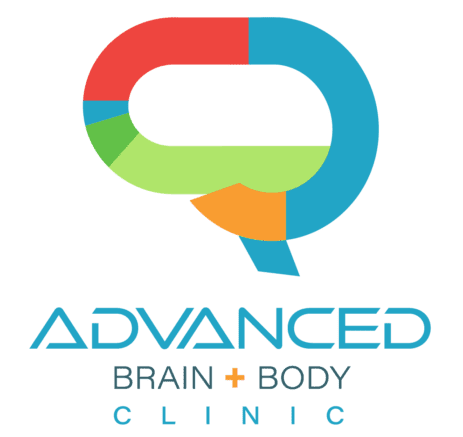For treatment-resistant patients, treat ADHD and comorbid mood disorders simultaneously.
Article originally appeared in Psychology Today, published on January 7th, 2025.
Key points
- One-third of patients who were referred for treatment-resistant depression (TRD) met the criteria for ADHD.
- For treatment-resistant patients, when multiple drugs have failed, an ADHD diagnosis can be critical.
- Don’t delay in treating ADHD while continuing any interventional treatment for disabling mood disorders.
- Treat ADHD and comorbid symptoms simultaneously to restore the body’s intended natural state.
Much has been written about undiagnosed ADHD in adults. All too often, patients have suffered for decades and may have been treated for comorbid conditions first, including depression, anxiety, bipolar, and other mood disorders. Patients with ADHD may have had a long history of treatments focused on the symptomatology of comorbid conditions rather than addressing the causative factors of ADHD itself. Some have already tried numerous medications, as well as ketamine, esketamine, or transcranial magnetic stimulation (TMS).
The 2017 National Comorbidity Survey reported that adults with ADHD are three times more likely to develop major depressive disorder (MDD), six times more likely to develop dysthymia, and more than four times more likely to have any mood disorder. Another study in 2017 found that one-third of patients who were referred for treatment-resistant depression (TRD) met the criteria for ADHD.1
Treating ADHD is straightforward, using stimulants like Adderall or Ritalin, and the patient often experiences life-changing relief almost immediately. But with comorbid conditions, which do you treat first, ADHD or the mood disorder?
The NIH recommends treating the mood disorder first until the patient is “stabilized.” Stabilized is the key word here, particularly if the patient is suicidal, manic, or psychotic.
“If depression is the most functionally disabling condition, its effective treatment may improve symptoms of frustration, anxiety, irritability, and concentration [69]. If ADHD is the most disabling condition in the presence of mild depression, a long-acting psychostimulant may improve ADHD symptoms and also the resultant demoralization, distress and mild depressive symptoms.”2
However, for treatment-resistant conditions, where multiple drugs have failed to address severe depression and other conditions, an accurate ADHD diagnosis can be critical.
Treat ADHD and mood disorders simultaneously
In my experience using interventional psychiatry for TRD and severe mood disorders, the answer is pretty clear. ADHD must be treated along with depression, anxiety, and other comorbid conditions in order for the patient to experience the most significant impact. This is because ADHD involves a deficiency of neurotransmitters dopamine and norepinephrine, which can directly correlate with changes in mood, executive functioning, and emotional self-regulation.
Most cases of ADHD respond quickly to stimulants with minimal side effects, and the result can be swift and dramatic. Treating the causative source of impairment may also decrease the need to treat associated symptoms, such as depression. After appropriate treatment of these ADHD symptoms, other mental health treatments may frequently be tapered or discontinued, as comorbid conditions can sometimes resolve on their own.
Steve’s Story: Ketamine helped his depression, and ADHD treatment made it disappear
Steve is a married Caucasian man in his 60s with autism spectrum disorder who runs his own firm. He has declared bankruptcy three times and has a lifelong history of depression and anxiety, for which he has tried transcranial magnetic stimulation (TMS therapy Minneapolis), ketamine therapy, and more than a dozen antidepressants and anxiolytics over 30 years, including Prozac, Zoloft, Celexa, Lexapro, Cymbalta, Pristiq, Wellbutrin, Auvelity, Paxil, Buspar, clonazepam and Ativan.
Steve received a total of 49 ketamine infusions over several years, finding these helpful for depression. Over time, he developed sedating side effects to ketamine and stopped taking it. Shortly thereafter, he was diagnosed with ADHD, inattentive type.
He started Adderall and felt that it was more effective for his mood than any other medication he had taken historically. He was able to function much better at work and decided to sell his now successful business so that he could retire.
After increasing Adderall to the maximum recommended FDA dose of 60mg a day, Steve was able to stop all medications for depression and anxiety, as his symptoms resolved simply by treating their primary cause; his ADHD.
Jean’s Story: ADHD diagnosis and treatment transformed her life and reduced her need for mood-altering medications
Jean is a retired executive in her 70s. She suffered lifelong depression, anxiety, and PTSD after being physically abused by her father plus two subsequent husbands, as well as enduring childhood sexual abuse. She had taken clonazepam twice a day as needed for 20 years in addition to bupropion for 10 years, with six-month trials of duloxetine and fluoxetine.
Jean had been under the care of psychiatrists and psychologists for decades in several different states, as well as primary care providers. She came to our clinic after some of her children and grandchildren had been diagnosed with ADHD, stating, “I can never relax. Never. Why can’t I have a good time? I can’t enjoy anything.”
After being diagnosed with ADHD, Jean started Adderall and found it highly effective at improving her ability to function with no side effects. “For the first time in years, I was able to read the newspaper and get things done around the house. I could even socialize at a party without worrying.” Her insomnia paradoxically improved with Adderall, and she was able to stop bupropion entirely as ineffective for mood. She did start vilazodone and found this medication to be more beneficial due to its different mechanism of action, and also maintained lorazepam for anxiety when needed.
Conclusion
Although some recommend treating a patient’s mood disorder first prior to addressing symptoms of ADHD, I believe it is important to treat them simultaneously in order to restore the body’s intended natural state with sufficient levels of dopamine and norepinephrine for maximum benefit to a patient’s overall well-being.
References
Sternat T, Katzman MA. Neurobiology of hedonic tone: the relationship between treatment-resistant depression, attention deficit/hyperactivity disorder and substance abuse. Neuropsychiatr Dis Treat. 2016;12:2149–64 (found in BMC Psychiatry (2017) 17:302 DOI 10.1186/s12888-017-1463-3 )
Katzman, Martin A., et al. Adult ADHD and comorbid disorders: clinical implications of a dimensional approach Published Online: 2017-08-22 Crossref DOI link: https://doi.org/10.1186/s12888-017-1463-3

Brian Johns, MD is a Minneapolis psychiatrist and a mental health leader who helped shape ketamine treatment for depression in Minnesota and the nation. He co-authored a Minnesota VA Hospital medical trial to open the door for ketamine treatment to change–from a revolving-door hospital intervention, to an ongoing regimen at an outpatient clinic–while setting the benchmark for ketamine infusions nationwide. He then developed the region’s first ketamine infusion clinic. Over the past several years, he has administered or overseen thousands of ketamine treatments. Dr. Johns is a graduate of the University of Minnesota Medical School and completed his residency in Psychiatry. He is certified by the American Board of Psychiatry and Neurology.

